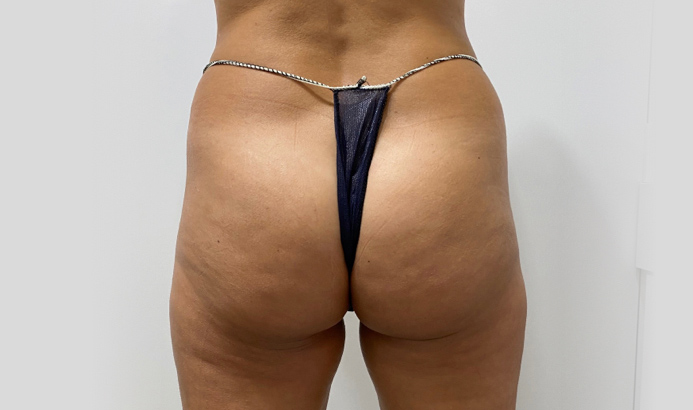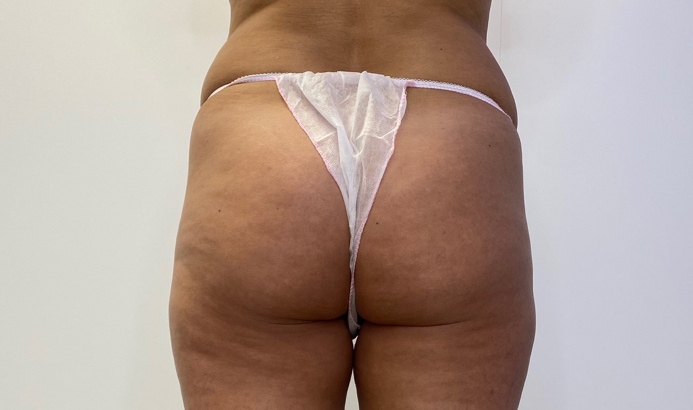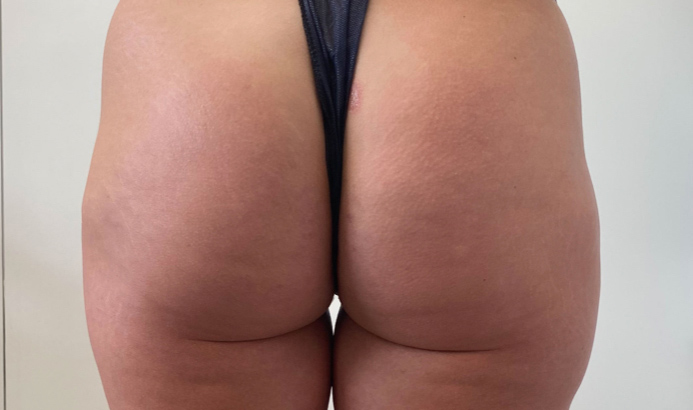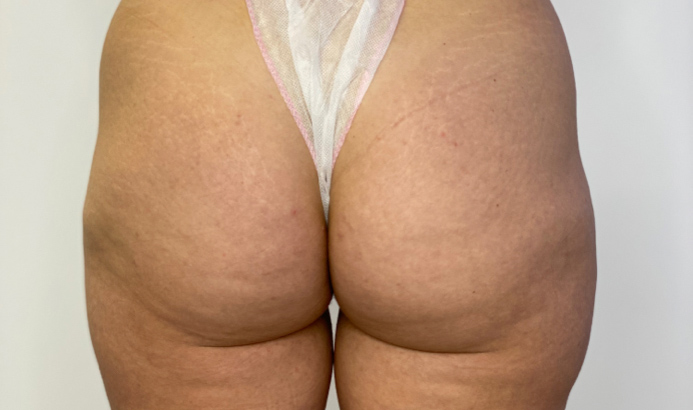Orange-peel skin: what it is and how to eliminate it
Orange-peel skin is a common aesthetic problem suffered mainly by women, and although it does not pose a health risk, it can affect self-esteem. Making it disappear completely is not easy, but there are effective treatments and products that reduce it.

What is orange-peel skin?
We must point out that, although they are used as synonyms, cellulite and orange-peel skin are not exactly the same: cellulite is the actual aesthetic condition, whereas orange-peel skin only refers to the visible part.
Orange-peel skin is a skin alteration that appears when the subcutaneous fat tissue accumulates between the collagen cells in the dermis, which causes it to lose its original structure and, on the surface, the appearance of an arrangement of small nodules that look like this fruit's peel.
Orange-peel skin is mainly found in the so-called gynoid regions: legs, buttocks, hips and abdomen and, as it is a metabolic skin disorder, it can affect people of any weight. Mind you, statistics show that it affects women to a larger extent: according to the Spanish Academy of Dermatology and Venereology (AEDV), between 85% and 98% of women suffer it to some degree starting in adolescence1.
Types of orange-peel skin
There is a specific scale for classifying cellulite according to the existence or not of orange-peel skin and its consistency. Summarising, we can say that there are three grades or types of cellulite, to which we can add a fourth: mixed cellulite. The milder it is, the easier it is to reduce and the better results you will see.
- Hard cellulite: This is mild cellulite. The tissue is rigid and toned, and the orange-peel skin is only visible when pinching the area.
- Flaccid cellulite: In this type of cellulite the tissue oscillates when moving. It moderately affects the subcutaneous tissue and the nodules are visible to the naked eye, without compressing.
- Oedematous cellulite: It occurs less frequently. It usually appears in the legs and glutes, increasing the volume of the affected limbs and sometimes causing pain.
- Mixed cellulite: It is common to find different types of cellulite on the body, that is, a person can have several types of cellulite.
Causes of orange-peel skin
The exact cause of orange-peel skin is unknown2, but there are certain internal and external factors conducive to its appearance that you should take into account if you want to avoid or reduce it:
Internal factors
- Hormones: Orange-peel skin usually appears at times with strong hormonal changes, such as puberty, pregnancy or menopause. Oestrogens are not the only hormones that have an influence on this. Other hormones such as insulin or thyroid hormones also make it appear.
- Age: Skin becomes less elastic with age, and this frequently leads to the appearance of orange-peel skin between the ages of 25 and 35.
External factors
- Unhealthy diet: High in salt, sugars, saturated fats and additives.
- Lifestyle: A sedentary lifestyle and unhealthy habits contribute to poor circulation and weakening of the tissues, as not enough blood flow and nutrients reach them.
- Stress: The stress hormone, cortisol, promotes fat accumulation and fluid retention.
Treatments for orange-peel skin
Although it is very difficult to completely remove orange-peel skin, here are some key tips and treatments that you can follow.
At home
- Follow an appropriate diet: Achieving a caloric deficit (burning more calories than you consume), reducing salt intake, drinking more water and eating diuretic and nutrient-rich foods with fibre and protein.
- Improving your lifestyle: Combining strength and cardiovascular exercise and reducing stress and alcohol and tobacco consumption.
- Massages and lymphatic drainage: To better eliminate toxins, you can use exfoliating gloves, rollers or brushes for cellulite and use techniques such as pinching and rolling (pinching the lumps and then going over them with the roller).
- Use specific creams, such as bodyshock® celluxpert, which is a multi-action body cream with active substances from caffeine, Brassica Alba extract, Arnica, capsaicin and organic silicon and that features an application system with roll-on spheres that contributes to the physical massage and product's absorption. You can also try bodyshock® intensive mist, which is an intensive action mist that improves the appearance of problem areas thanks to the highly efficient [meso]adipoactive complex™.
Professionals
However, if you want to achieve optimal results, we recommend that you opt for the bodyshock® range's professional in-cabin treatment. The bodyshock® body aesthetic treatment is fully personalisable, combines the latest technology in exclusive active ingredients and massage motions and has proven efficacy. It consists of two phases, one in-cabin, which includes a diagnosis using the new bodyshock diagnosis systemTM, and another at home. And if you use the creams that we have mentioned, you will maximise the results.
bodyshock®: range of custom-made body solutions
Fully-personalised protocol that improves cellulite, localised fat, flaccidity and stretch marks.
Before and after results: bodyshock® treatment
We hope that this article has helped you learn more about orange-peel skin and what you can do if you want to get rid of it.
Bibliography
1 https://aedv.es/comunicacion/notas-de-prensa/celulitis-lo-ultimo-para-combatirla/
2 https://www.tucanaldesalud.es/es/voz-especialista/celulitis-piel-naranja-puedo-hacer
locate your reference centre
Where can I obtain information or undergo the treatment?















